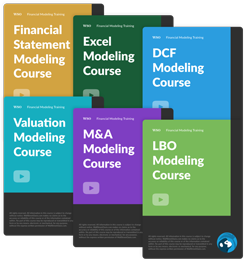Stupid Options Question
I'm looking at calls for gold (http://finance.yahoo.com/q/op?s=GLD&m=2011-03) and I have a really dumb question. Why isn't the strike price and the strike price + market price perfectly correlated? For example, if there's a 60 dollar option at gold and the current market consensus is that gold will be at 130 in a month the option should be trading at 70. If there's an option with a strike at 100 then the price should be 30. IE if you take the strike price and do a correl with the strike + market price the correlation should be 100 percent. But it's like 91 percent only.
Can anyone explain this to me?



Option price is calculated by implied volatility, time to expiration, risk free rate, and a couple other things that slip my mind right now--not just strike-market price. Look up black scholes option pricing formula for a more detailed description.
a 100 strike call on GLD will have more time value than a 65 strike call. This is because the probability of the 65 call expiring in the money is a lot higher than the 100 and therefore behaves like the stock (and is therefore priced closer to intrinsic value).
Options arent priced by looking at a consensus future price.
I get that but check this out: https://spreadsheets.google.com/ccc?key=0AqlfiH4iWEZidDlxWTRUZVg5LVBycj…
The chart has the Strike Price along the x axis and the Strike + Option Price as the Y axis. Do you notice how the lower price + option part of the chart is really choppy? Why is it that strike prices 400, 410, and 420 have strike + option prices of 628, 574, and 582 respectively? It would seem that with high volume that sort of dip should be arbitraged away as they're all in the money (ie you could buy up 410 and short the other two in order to smooth the curve). It seems doubly strange because the rest of the chart goes up extralinearly (ie >y=x) in price as you go to the right, which I assume is due to a bullish market.
So the chart looks 'heteroskedastic' for lack of a better term, and I want to know why.
the key there is 'with high volume'. Not much liqudity at far off strikes. Even then looking up GOOG options chains with imp vol doesnt have that choppiness.
If you have access to bloomberg, you can see that skew for really low strikes is something ridiculous like 60%+ above the ATM, but this is just because there is no liquidity.
You say that, and I have also heard this elsewhere. However, then why doesn't this show up in a higher Bid-Ask Spread? The Bid-Ask is 2 to 3 dollars on the low end of the Strike Prices and at the high end it goes to zero, so there is definitely more liquidity at the top. But this doesn't do anything to get rid of my notch - on a 600 dollar stock like GOOG 3 dollars B-A isn't a whole lot - the notch from 400 to 410 Strike goes from 628 to 574!
This thread confirms I have no business in trading options.waves hand over head
Yeah I took a course on Black-Sholes and got an A in it. Supposedly that was supposed to mean I learned something.... I feel really dumb about all this.
Buddy, I don't want to be an asshole... But from what I see, you know very little about BS model otherwise you wouldn't have asked what you asked. That being said, why price of options wasn't perfectly correlated? The theoretical pricing model is not linear model in the first places. Second, in reality, have you ever heard of volatility skew/smile? Because of Volatility Skew/smile, out of the money options are traded at higher implied volatility after 1987 crash...
Why bid/ask spread is different for different strike? Leverage... the leverage for at the money and out of the money is much higher than in the money options. Therefore traders and investors love at the money and out of the money options more. So its more liquid.
You need to study your option pricing theory books again.
Here's a classic case of what I'm talking about:
Take POT (it's that Potash company). These are the last prices for some of it's calls for March as of last Friday:
Strike Price || Option Price || Strike + Option Price
100 || 83.4 || 183.4 105 || 64.8 || 169.8 110 || 75.2 || 185.2
So let's say I short the 100 call and the 110 call and go long on 2 shares of the 105 call. This would mean that in time period 1, before we know the result of the stock, I get 83.4 - 2*64.8 + 75.2. That's 28.8 bucks so not too shabby. Now, I'm also perfectly hedged - the most I can lose on this trade is 5 dollars no matter the final price - you can check my math below. This hedging strategy works wherever there are three consecutive strike prices where the middle price is the mean of the high and the low and the option price of the middle strike price is the lowest.
115 5 10 15 0 114 4 9 14 0 113 3 8 13 0 112 2 7 12 0 111 1 6 11 0 110 0 5 10 0 109 0 4 9 -1 108 0 3 8 -2 107 0 2 7 -3 106 0 1 6 -4 105 0 0 5 -5 104 0 0 4 -4 103 0 0 3 -3 102 0 0 2 -2 101 0 0 1 -1 100 0 0 0 0 99 0 0 0 0 98 0 0 0 0 97 0 0 0 0 96 0 0 0 0 95 0 0 0 0
Please someone tell me that I'm wrong because it seems crazy that such a thing could exist in the market like this.
And the reason I found this is because I was using closing rather than bid/ask.
Never mind. Guh.
Aut adipisci ea et aliquam qui voluptatem officia. Aut adipisci sed vel earum ullam. Sit eum quos amet iste quidem.
Inventore dolores earum repudiandae magnam. Est vel eos harum assumenda ab asperiores. Voluptatem laboriosam laborum distinctio aut non nesciunt eos facilis.
Reprehenderit ut sunt autem magnam fugiat omnis iusto. Sed velit eum aut possimus et.
Repellat enim iusto quaerat nihil quasi. Amet laudantium dignissimos aut illum tempore. Quidem voluptatem qui quo id. Fuga aut ducimus deserunt odio placeat recusandae est.
See All Comments - 100% Free
WSO depends on everyone being able to pitch in when they know something. Unlock with your email and get bonus: 6 financial modeling lessons free ($199 value)
or Unlock with your social account...